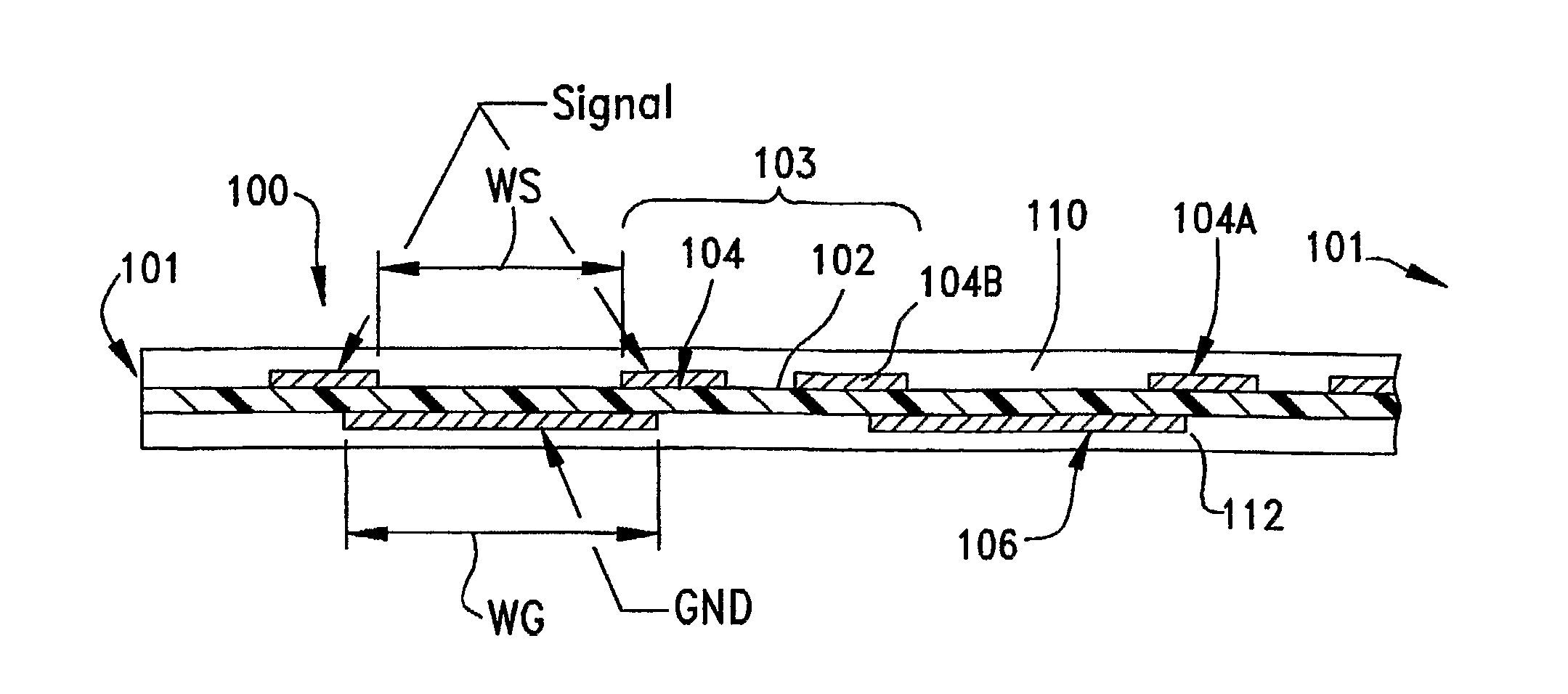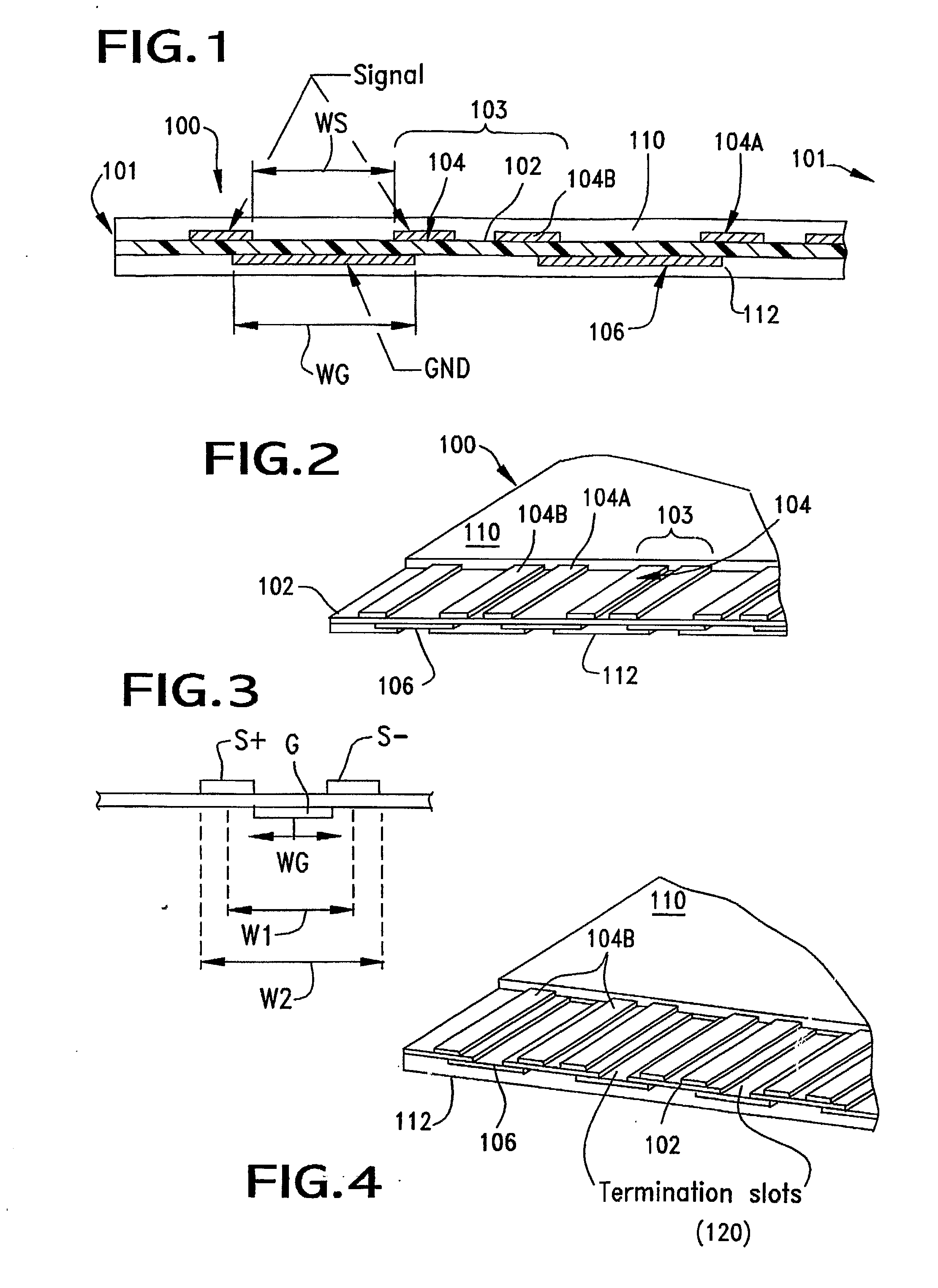Flexible flat circuitry
a flat circuit and flexible technology, applied in the direction of flat/ribbon cables, insulated conductors, cables, etc., can solve the problems of high signal attenuation, difficult to maintain constant impedance and high signal transfer speed in certain transmission lines, increase the cost of transmission lines, etc., to promote differential signal transmission through transmission lines, improve low impedance, and flexible transmission lines
- Summary
- Abstract
- Description
- Claims
- Application Information
AI Technical Summary
Benefits of technology
Problems solved by technology
Method used
Image
Examples
Embodiment Construction
[0016]FIG. 1 illustrates an end view of an extent of FFC that incorporates the transmission lines of the present invention. The transmission line 100 is seen to have a support base, or substrate 102 that has a longitudinal extent between two opposing ends of the FFC and which has two side edges 101. This support base is formed of an insulative material.
[0017]The support base supports a plurality of conductive traces on opposing or top and bottom, as shown, surfaces. The bottom surface is seen in FIG. 1 to support a pair of ground traces, while the upper surface is seen to support five signal traces 104. The signal traces are arranged in pairs of traces, with each pair including traces 104A and 104B, with the pair of signal traces carrying differential signals from a source to a destination.
[0018]The two signal traces 104A, 104B of each pair of signal traces are spaced apart by a preselected distance WS. An associated ground trace 106, or “GND” is disposed on the opposite side of the...
PUM
| Property | Measurement | Unit |
|---|---|---|
| impedances | aaaaa | aaaaa |
| impedances | aaaaa | aaaaa |
| impedances | aaaaa | aaaaa |
Abstract
Description
Claims
Application Information
 Login to View More
Login to View More - R&D
- Intellectual Property
- Life Sciences
- Materials
- Tech Scout
- Unparalleled Data Quality
- Higher Quality Content
- 60% Fewer Hallucinations
Browse by: Latest US Patents, China's latest patents, Technical Efficacy Thesaurus, Application Domain, Technology Topic, Popular Technical Reports.
© 2025 PatSnap. All rights reserved.Legal|Privacy policy|Modern Slavery Act Transparency Statement|Sitemap|About US| Contact US: help@patsnap.com


